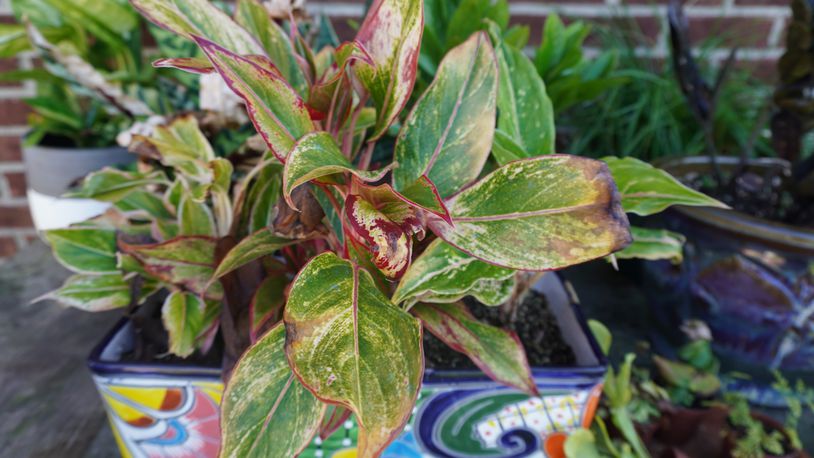Houseplants tend to be tropical in nature and won’t tolerate cold temperatures. They absolutely won’t tolerate a frost, so bring them in well before that. Cooler temperatures won’t hurt them if you can’t get to them in the next few weeks, but it slows their growth.
Houseplants that have been outside are likely to have insects either on the foliage or stems and in the soil.
The soil might contain pests such as earwigs, fungus gnats, sowbugs, and pillbugs that are typically there because of the moisture and organic matter. These insects do not usually damage the roots but can be quite an annoyance when in the house. It is possible that there are some root-damaging insects in the soil as well.
The foliage might have mealybugs, aphids, two-spotted spider mites, and scale. Inspect the plant thoroughly for any of these.
Get rid of these pests and potentially their eggs before bringing them in. There is nothing worse than a fungus gnat outbreak in the middle of winter in the house!
I use a systemic insecticide to help combat any insects that are on the plant as well as in the soil. There are several insecticides available, just make sure that the label says it can be used on houseplants and that the potential insects are on the label.
Prior to using the herbicide, I water my plants until the water drains out the hole for several minutes. Hopefully, this removes some of the soil-dwelling insects (such as slugs, centipedes, and millipedes). Some people sink the plants in a bucket of water and leave them there for several hours.
I then place the systemic granules on the soil and lightly work them in, according to the label. I water them thoroughly and leave them outdoors for several more days so that the insecticide is activated and working to kill any pests that are on the plant.
The systemic that I use lasts eight weeks and will also kill any newly hatched insects that I didn’t get washed off.
I prune them and clean up any dead or damaged leaves prior to bringing them in. Keep in mind, that during the winter months, they won’t grow much. Therefore, don’t prune too harshly, just remove dead leaves.
The final thing is to bring them into the house. Many resources recommend acclimating them to the house, like the way you acclimated them when going outside in the spring.
Credit: Contributed
Credit: Contributed
The theory is that they are coming from a high-light situation to a lower-light setting. I don’t worry about this too much because I am bringing them into a well-lit south window.
If you are moving them to a low light situation (north window, no window) you may want to slowly adjust the amount of light over a few weeks period. This prevents shock to the plant and potential leaf drop.
Stop fertilizing until next spring and realize that they won’t need as much water once inside. Fertilize lightly if needed in the middle of winter.
Pamela Corle-Bennett is the state master gardener volunteer coordinator and horticulture educator for Ohio State University Extension. Contact her by email at bennett.27@osu.edu.
About the Author
